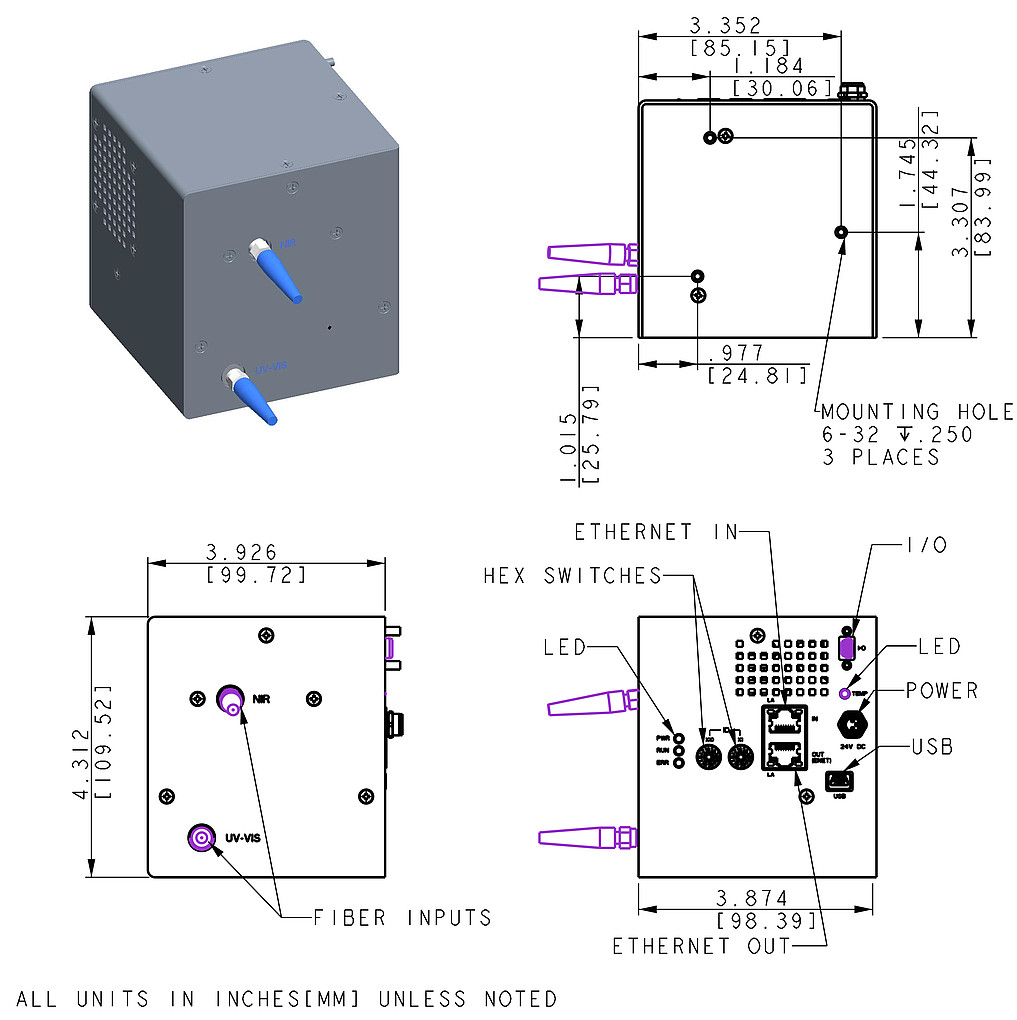Ultra Compact and Broad Range Spectrometer
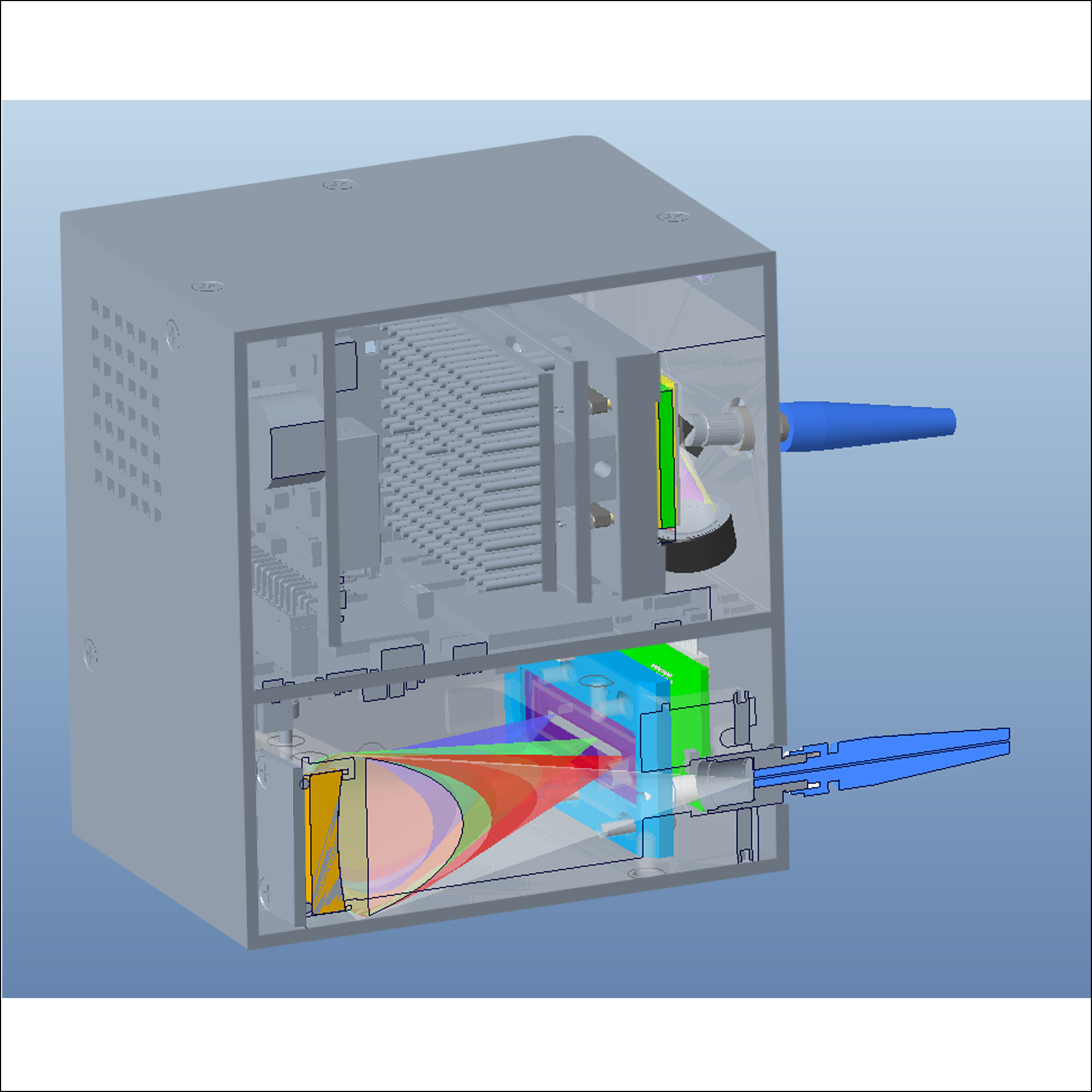
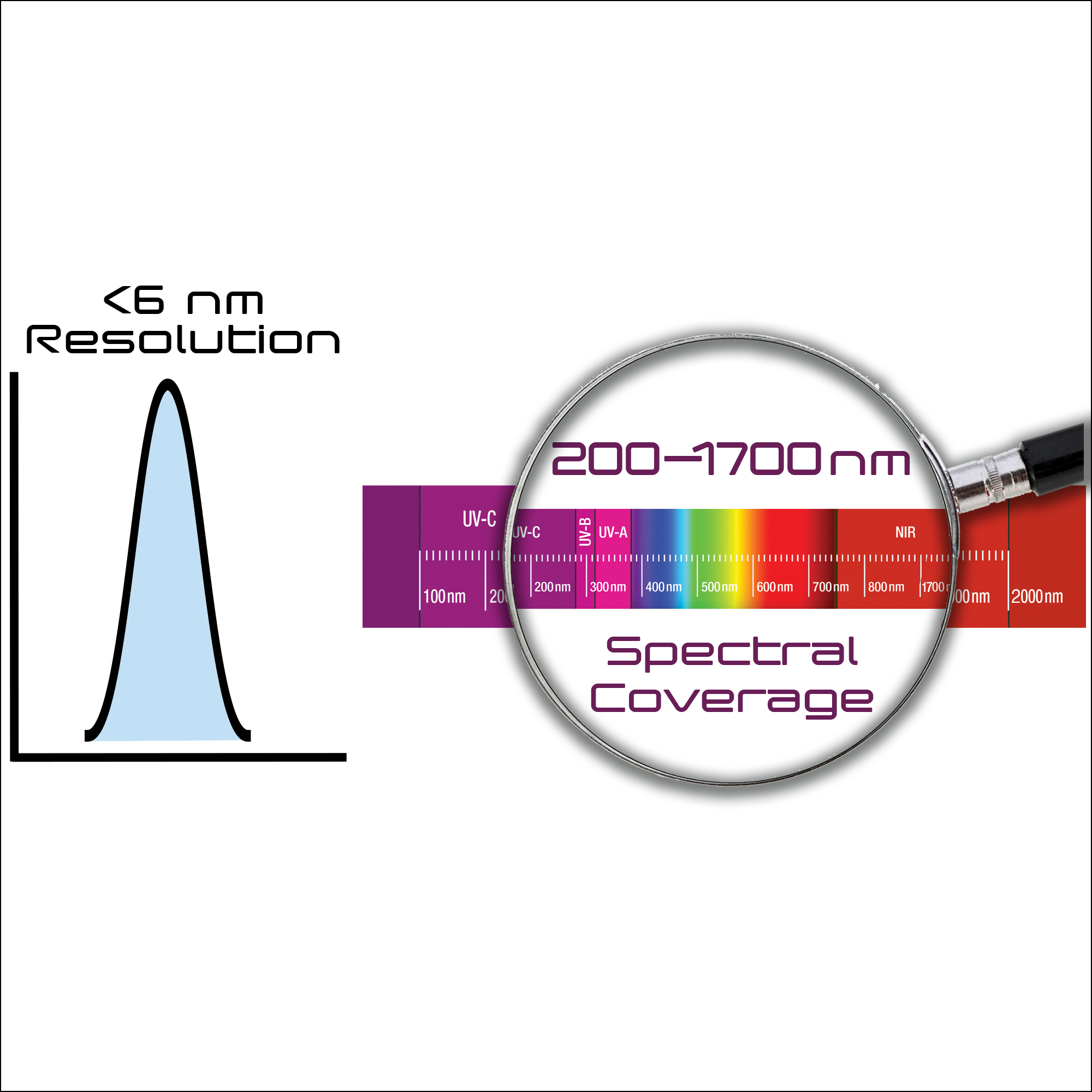
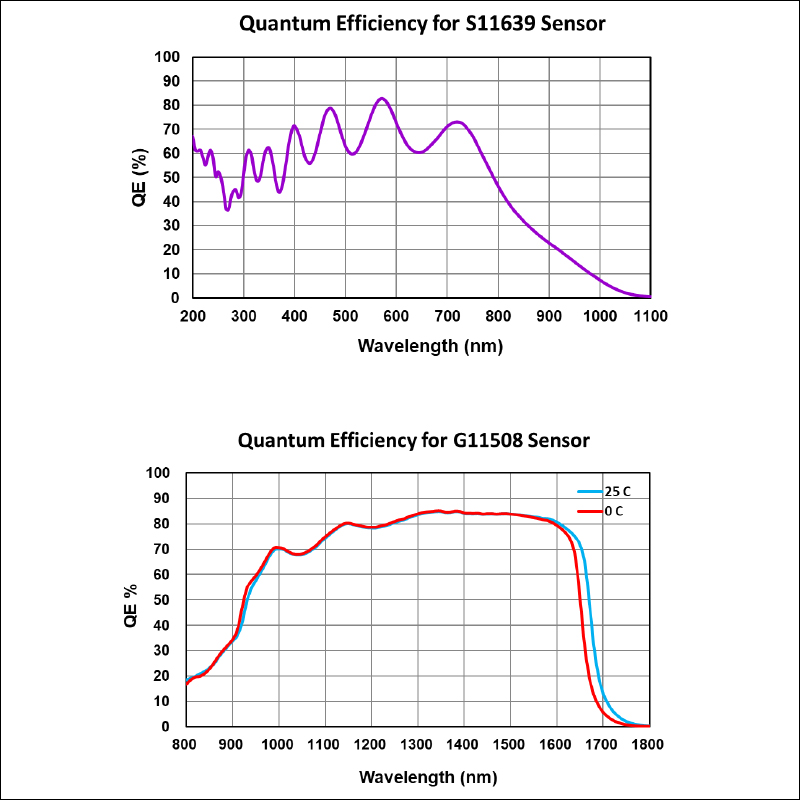
InVizU Cube (Infrared-Visible-Ultraviolet) is the latest evolution of the ultra compact, high performance spectrometers from the HORIBA Scientific OEM team. This dual system for industrial applications uses a modified miniaturized VS70 optical engine optimized for the UV-VIS spectral range along with the VS20 optimized for the NIR spectral range. The InVizU Cube is based on high performance aberration corrected concave holographic gratings fitted with custom multi-area order-sorting filter to eliminate higher orders.
This platform is specially designed to easily adapt to a large variety of detectors and electronic drivers. The optical design is optimized to minimize stray light and maximize optical performance. The InVizU Cube outperforms current generation of broad range mini-spectrometers thanks to its compact sleek design, high sensitivity, flat spectral response and resolution.
For OEM Industrial Applications
ㆍ Fluorescence
ㆍ Photoluminescence
ㆍ Reflectance
ㆍ Emission
ㆍ Examples :
- Semiconductors
- Food Integrity and Pharma Production
- Life Sciences
- Analytical Chemistry
- Metrology
- Process Monitoring
ㆍ Extended spectral coverage of 200 -1700 nm
ㆍ Super compact size (100 x 100 x 108 mm) robustness and stability
ㆍ High SNR CMOS sensor combined with cooled NIR IGA array
ㆍ Simultaneous acquisition of UV-VIS and NIR spectra
ㆍ Includes a custom-madebifurcated SMA fiber as a dual input to the spectrometer
ㆍ Triple USB 2.0 Ethernet and EtherCAT communication
ㆍ High throughput and ultra low stray light
OEM Spectrometer Selection Guide
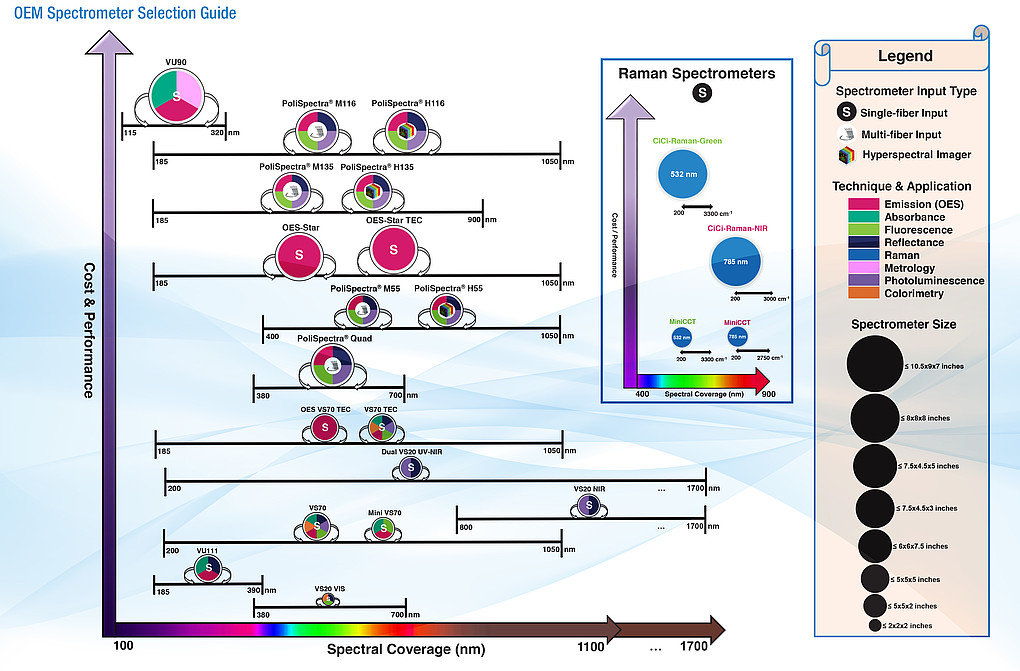
| General Spectrometer Specifications* | |
|---|---|
|
Spectral Coverage |
200 - 1,700 nm |
|
Spectrometer Input |
Input port: SMA for UV-VIS and custom-end ferrule for NIR (see drawing for details) |
|
Spectral Resolution |
< 6 nm |
| Average Spectral Dispersion |
17 nm/mm for UV-VIS and 75 nm/mm for NIR |
|
Focal Length |
70 mm for UV-VIS and 20 mm for NIR |
|
F/# |
F/4 for UV-VIS and F/2.7 for NIR |
|
Stray Light |
± 0.1 nm |
|
Wavelength Accuracy |
< 0.4 nm (using multi-area wavelength calibration) for UV-VIS and 5 nm for NIR |
|
Software |
LabVIEW™ acquisition software for initial evaluation (DLLs provided for software integration) |
| Detector Options and Specifications* | |||
|---|---|---|---|
| High Speed Linear Front Illuminated CMOS Sensor | TE Cooled Linear InGaAs Detector | ||
| Detector Model | Hamamatsu CMOS lineari mage Sensor S11639 with active pixel structure and global e-shutter | Hamamatsu InGaAs Linear Image Sensor G11508 on a CMOS chip |
|
| Detector Sensor Format | 2048 x 1 pixels | 512 x 1 pixels (256 x 1 pixels, optional) | |
| Detector Active Area | 28.7 mm x 0.2 mm | 12.8 mm x 0.5 mm | |
| Detector Pixel Size | 14 μm x 200 μm | 25 μm x 500 μm (60 μm x 500 μm, optional) | |
| Detector QE | Refer to graphs below | Refer to graphs below | |
| Full Well Capacity | 100,000 e¯ (typical) 80,000 e¯ (minimum) |
Low-Gain: 175,000,000 e¯ (typical) |
High-Gain: 17,500,000 e¯ (typical) |
| Readout Noise | 16 e¯ (typical); 20 e¯ (maximum) | Low-Gain: 16,000 e¯ (typical) |
High-Gain: 1,900 e¯ (typical) |
| Dynamic Range (FW/RN) |
6,250:1 (typical) 75.9 dB (typical) |
Low-Gain:11,000:1 (typical) 80.8 dB (typical) |
High-Gain: 9,000:1 (typical) 79.1 dB (typical) |
| SNR (SQRT FW) | 316 | Low-Gain: 13,228 | High-Gain: 4,183 |
| Dark Current | 375e¯ pixel/s (typical) 500 e¯/pixel/s (maximum) @ 20° C |
Within ±250,000 e¯/pixel/s (typical) @ 5° C | |
| Maximum Spectral Rate | 5,000 spectra/s (Single IGA Sensor Mode) 833 spectra/s (Single CMOS Sensor Mode, or Dual Sensor Mode of CMOS+IGA) |
||
| ADC | 16-bit | ||
| Thermoelectric Cooling (1-Stage) |
Uncooled | 0° C @ T (ambient external) ≤ +30° C +5° C @ T (ambient external) ≤ +35° C +10° C @ T (ambient external) up to +40° C |
|
| Non-linearity | <1% (corrected) | <1% (uncorrected, will be smaller after correction) | |
| Sensor Operating Modes | Single CMOS Sensor (UV – VIS) Single IGA Sensor (NIR) Dual Sensor (CMOS & IGA) |
||
| Exposure Time | 20 μs up to 100 sec (defined only by dark current) | ||
| Exposure Time Modes for Dual Sensor Operation |
Standard (equal sensor integration time values) and variable (different synchronized sensor integration time values) |
||
| Communication Interface | Multi Communication (MC): USB 2.0 HS, Ethernet (10/100), or EtherCAT (Optional) | ||
| Environmental Conditions | Operating temperature 15° C to 40° C ambient Relative humidity <70% (non-condensing) Storage temperature -25° C to 45° C |
||
| Power Requirements AC/DC Power Supply (provided) |
24VDC @ 0.36A typical (3-Pin M8 Connector) | ||
* HORIBA Instruments has a policy of continuous product development, and reserves the right to amend part numbers, descriptions and specifications without prior notice
Quantum Efficiencies
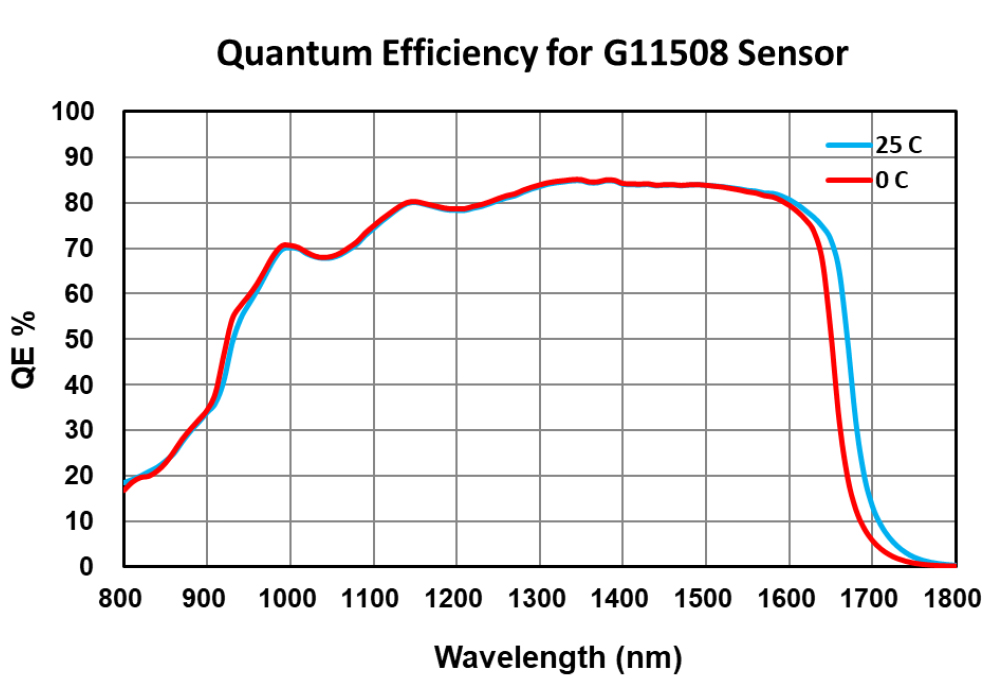
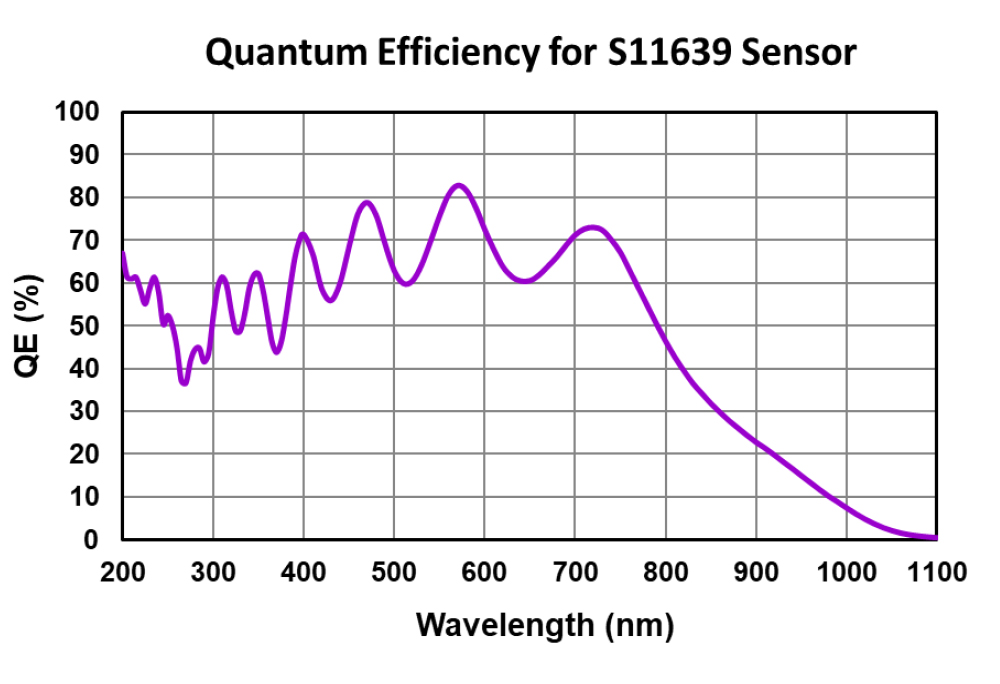
Mechanical Drawings
